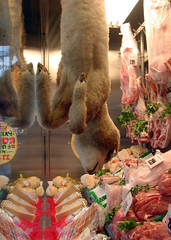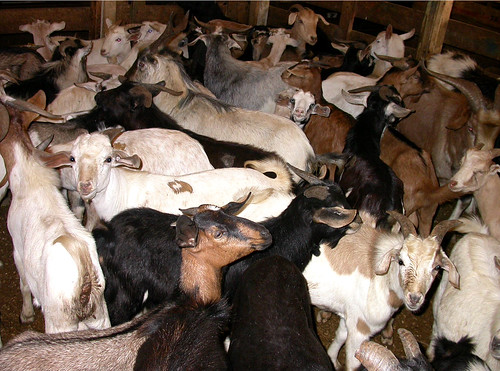The demand for sheep and goats traditionally increases at Easter. This year, one week separates Roman (traditional) and Orthodox (Greek) Easter. Roman Easter was April 8, whereas Orthodox Easter is April 15.
While many Christian Americans enjoy lamb at Easter, lamb is more strongly favored by Orthodox Christians, such as Greeks, Italians, Eastern Europeans, Russians, and Ethiopians.
Many sheep and goat producers sell their animals in advance of the Easter holidays, in anticipation of higher prices.
New Holland Sales Stables (in Pennsylvania) is one of the premier sheep and goat markets in the United States. According to the market report, all of the lambs are destined for non-traditional markets.
Roman Easter (April 9)
On April 2, lamb prices were $15 to $20 higher at New Holland, as compared to the previous week. However, hair lambs were discounted up to $50 per cwt, as they are less desirable for the Easter trade that seeks a fancy, fleshy, milk-fed lamb. Prices for ewes were mostly $10 below the previous week’s prices. 2599 sheep and lambs were sold. Sheep are sold by the hundred weight (cwt), based on actual weights.
Kid prices were lower or steady compared to the previous week, with fewer Selection 1 kids available. Nanny goats traded $5 to $10 lower, whereas billies were $15 lower. The market report attributed the lower prices to the quality of offerings. 2185 goats were sold. Goats are sold by the head, based on estimated weights.
Orthodox Easter (April 15)
On April 9, lamb prices were mostly $60 higher than the previous week’s prices. The top price was paid for a group of 50 to 60 lb. lambs at $3.70 per lb. The highest average price was for fancy lambs that averaged 48 lbs; they brought $360.13 per cwt.
Slaughter ewe prices were higher than a week ago, with medium-fleshed ewes topping $1 per lb. The market report attributed the higher prices to the higher quality of the animals. The lighter offering (1864) may also have contributed to the higher prices.
Kid prices were $10 to $15 higher, with instances of $25 higher for Selection 1 kids. Nanny goats traded mostly $10 higher and billies brought $10 to $15 more than the previous week. Quality probably accounted for the improved prices. 2024 goats were sold.
New Holland market report (April 2) - weighted average
New Holland market report (April 9) - weighted average
While many Christian Americans enjoy lamb at Easter, lamb is more strongly favored by Orthodox Christians, such as Greeks, Italians, Eastern Europeans, Russians, and Ethiopians.
 |
| "Hothouse" lamb |
New Holland Sales Stables (in Pennsylvania) is one of the premier sheep and goat markets in the United States. According to the market report, all of the lambs are destined for non-traditional markets.
Roman Easter (April 9)
On April 2, lamb prices were $15 to $20 higher at New Holland, as compared to the previous week. However, hair lambs were discounted up to $50 per cwt, as they are less desirable for the Easter trade that seeks a fancy, fleshy, milk-fed lamb. Prices for ewes were mostly $10 below the previous week’s prices. 2599 sheep and lambs were sold. Sheep are sold by the hundred weight (cwt), based on actual weights.
Kid prices were lower or steady compared to the previous week, with fewer Selection 1 kids available. Nanny goats traded $5 to $10 lower, whereas billies were $15 lower. The market report attributed the lower prices to the quality of offerings. 2185 goats were sold. Goats are sold by the head, based on estimated weights.
Orthodox Easter (April 15)
On April 9, lamb prices were mostly $60 higher than the previous week’s prices. The top price was paid for a group of 50 to 60 lb. lambs at $3.70 per lb. The highest average price was for fancy lambs that averaged 48 lbs; they brought $360.13 per cwt.
 |
| Goats at New Holland |
Kid prices were $10 to $15 higher, with instances of $25 higher for Selection 1 kids. Nanny goats traded mostly $10 higher and billies brought $10 to $15 more than the previous week. Quality probably accounted for the improved prices. 2024 goats were sold.
New Holland market report (April 2) - weighted average
New Holland market report (April 9) - weighted average

No comments:
Post a Comment